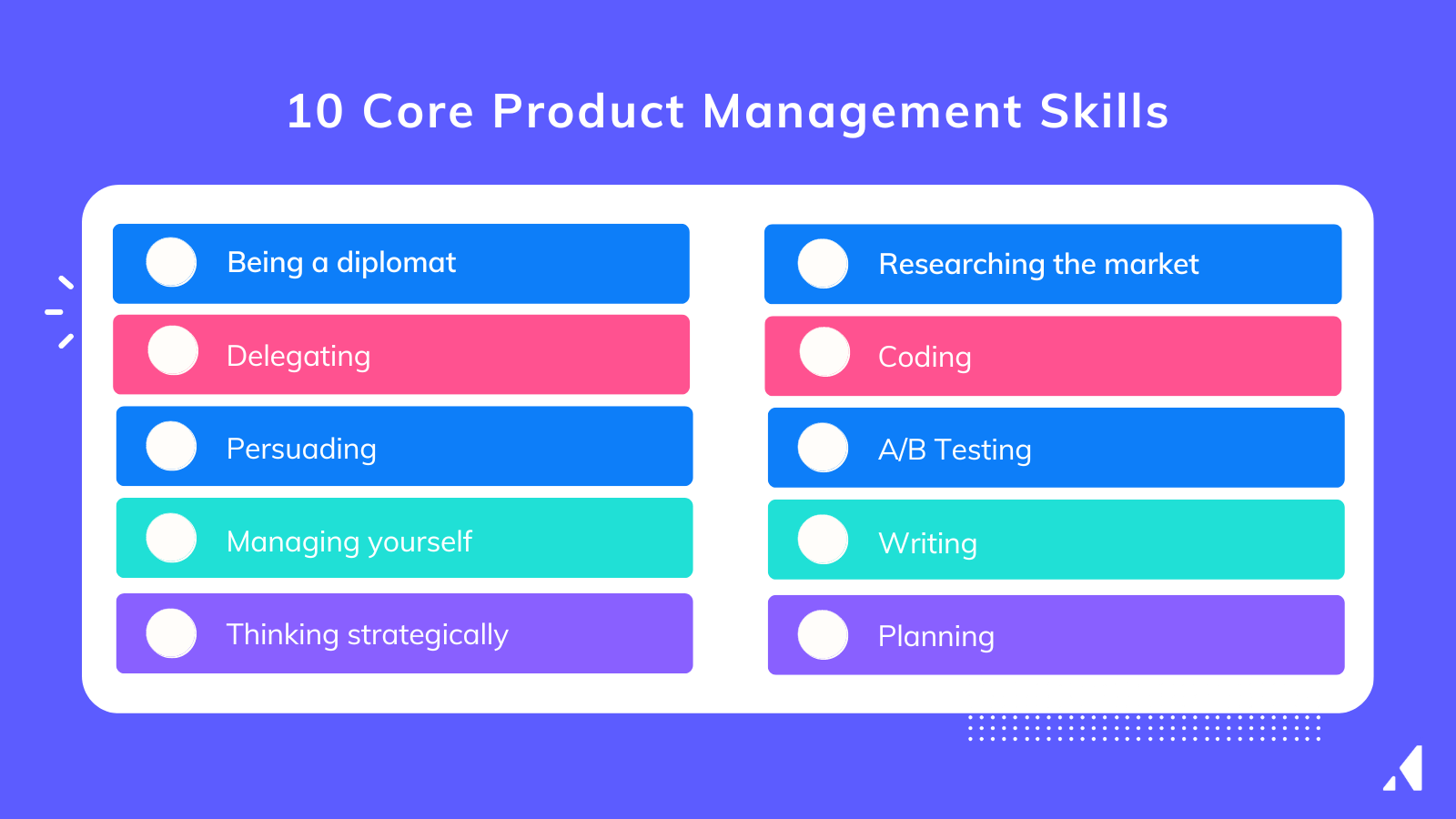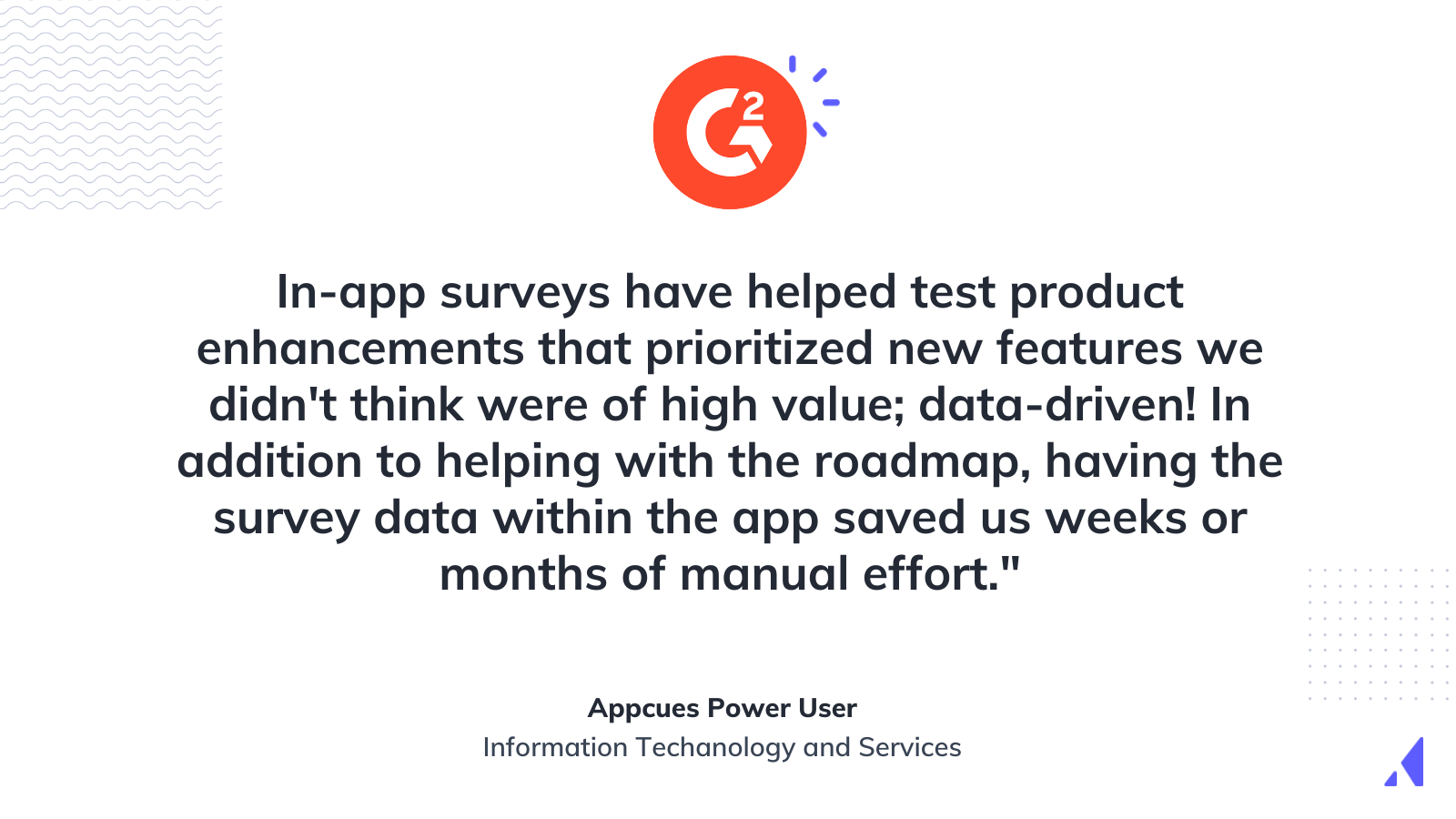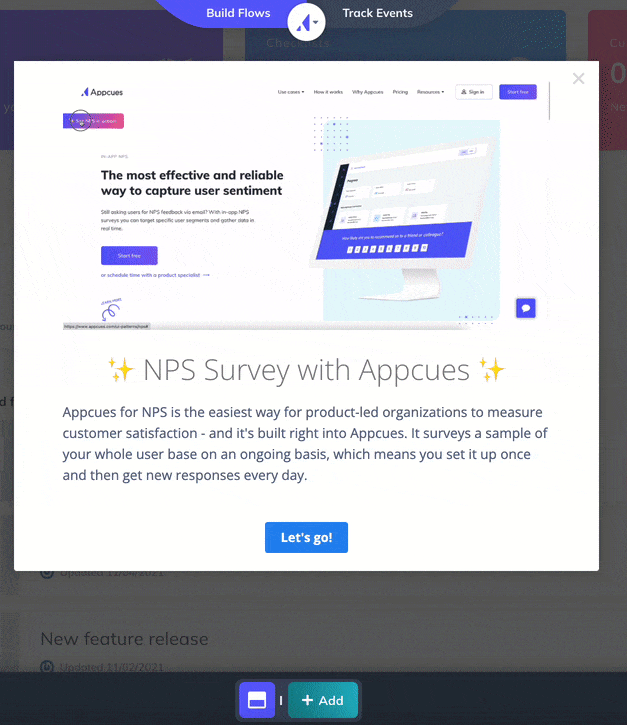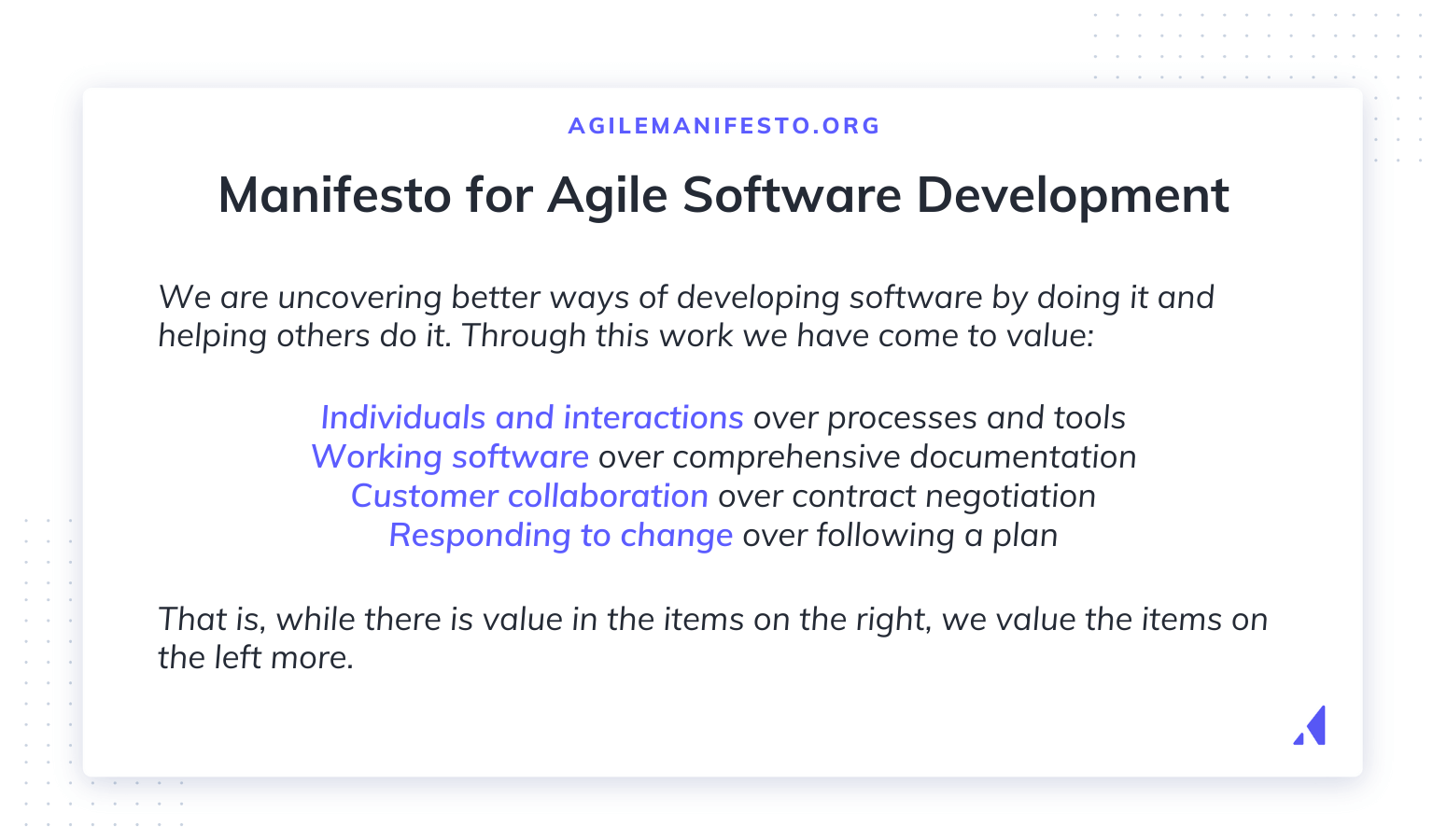What is Product Management? Skills, Processes & Tools

.png)

.png)
Who needs another worthless product? Nobody. But companies keep on pumping out junky products that fail to meet users’ needs.
Why? Bad product management. (Or no product management. 😬)
Product management is purpose-built to keep bad products from hitting the market. When one company succeeds and a similar company fails, product management is often at the center of the victor’s success.
But what is it, exactly? You’re about to find out. Read on to learn the basics of product management, including the skills, processes and software required to do it right.
Product management is what happens throughout the product life cycle. It’s what takes a product from being a hard kernel of an idea to a popped, buttery, well-positioned and perfectly priced product for sale.
Product managers are those who oversee this process. They act as representatives for the consumer, asking whether the product is truly addressing market desires or filling a customer need and improving it at every step.
One key exception to the customer-first approach of product management is growth product management, in which product managers oversee more than one product and are more responsible for business development (although they do still focus on customer needs to develop the business).
One does not simply do product management—you have to do it well. To do that, you’re going to need a certain set of skills:

Let’s look at each of these core product management skills in a little more depth:
Users are the rock. Your company is the hard place. You’re stuck in between them. That’s why you have to have top-notch diplomacy skills to succeed in product management. It’s all about bringing the rock and the hard place closer together to make the situation better for everyone—yourself included.
Although companies need users to make money on their products, they aren’t always properly incentivized to make customer-centric products and product updates. Meanwhile, customers don’t care about the profitability of the company or the quarterly report your CEO has to make to the board.
It’s the product manager’s job to make sure the product is as useful to users as possible while still making the company money. That means you might have to deliver some tough news to engineering and development from time to time. Delivering it in the right way—the way that fosters real product improvement and not just hurt feelings—is key. That comes down to your inner diplomat.
Delegation isn’t a mirror muscle. When you flex your delegation muscle, other people get credit for doing stuff. To be a great product manager, you have to be OK with that.
Here’s the thing: The product life cycle is long and eventful. If you try to manage every single aspect of it, you won’t just burn out. You’ll fail. It’s not a choice—you have to delegate. (One more time for the folks in the back: you have to actually delegate.)
No matter how accustomed you are to overseeing everything, working long hours, and doing final checks and approvals, you have to give some of it up. You have to let other people take on certain parts of the product management role, and you have to let them work independently of you and your approval.
For many early-stage product managers, that’s easier said than done. Work on it now to save yourself some pain in the future.
Product management requires a vision. You understand the product as it currently exists and the product as it should exist to truly satisfy market desires. Someone has to convince the engineers to make the thing better. If not you, then who?
It’s your job, and to do it, you have to be great at persuasion. That means you have to understand who you’re speaking to—who, exactly, you're trying to convince to change the product.
Oftentimes, that'll include a team of engineers or developers. Not to put anyone in a box, or anything, but these are typically numbers people. So, support your product cheerleading with hard numbers. How many users asked for the feature you’re fighting for in surveys? How many positive reviews of a competing product mentioned this feature? Do your research and report it convincingly.
But don’t forget: Your product’s story is its greatest asset—even before it leaves the corporate womb and enters the big, wide world of the consumer market. So, tell the story.
"Your product’s story is its greatest asset."
Product management storytelling is all about anecdotes from user feedback and interviews. Paint a picture of the product’s success in the minds of those you’re trying to persuade.
From an organizational perspective, product management positions are often unmanageable because they span so many disparate departments and areas of focus. That means product managers are left to manage themselves.
Make no mistake—even if you have little to no oversight in your role as product manager, you’re ultimately responsible for a large part of the product’s success. And you will be held accountable for it. That means you have to hit deadlines and build a great product by answering to yourself.
Set up processes and project management systems that allow you to effectively manage the product, and make sure you stick to them.
Companies often see themselves like boxers engaged in a fight with the competition. That’s fine for some contexts, but product managers don’t fight. They strategize.
While everyone else is boxing, you need to play chess. You need to think 10 steps ahead in the process of getting this product ready for release and prioritize what’s most important—both to the user experience and the product’s long-term success.
How do you know whether there’s a market need for a product? Even the most trustworthy gut will fail you here. (Hint: It’s all about hard market research.)
The ability to perform user research will take your product management processes a long way. That’s because this kind of market research can provide a wealth of real insight into what users are looking and hoping for in the products they use.
There’s a softer side to this relatively hard skill, though. Don’t forget to set yourself up to truly understand your industry. Here’s something you can do right now: Make a list of publications relevant to your industry and sign up for all of their email newsletters. That’s how you can stay up to date on what matters to users in your industry.
If it was your job to give a daily presentation to colleagues who only speak Mandarin, you would have to learn Mandarin to be good at your job. Developers and engineers don’t just speak code, but it’s going to be incredibly helpful to know some of the coding languages they deal in.
You’re not likely to be coding for products yourself, but understanding the basics of whichever coding language is most important to your product is going to help you communicate effectively with developers and engineers as you advocate for certain features and functionality.
Maybe you want the product one way (A) and dev wants it another (B). Maybe you could see it going one way (A) or the other (B). In either case, you have to A/B test it to find out which way is the best way.
That means you have to know how to run a proper A/B test. You have to understand what makes a strong hypothesis and how to create a truly neutral testing environment, and then you have to be able to execute these tests.
The day-to-day business of product management is about clarity—clarity of purpose, features, next steps and so on. And you foster clarity through great written communication.
Yes, it is possible to communicate well without writing if you’re working in an office or really into recording videos of yourself. But in reality, the written parts—email, Slack, text, release notes, etc.—are going to be key to communicating what you need to communicate as a product manager.
You don’t have to be a cartographer to succeed as a product manager, but it’s really helpful if you know how to make a solid roadmap. That’s because it’s your job to create the roadmap the product will follow, and it has to be a clear and detailed enough map for every team involved with the product to follow.
Building roadmaps is all about planning, of course, so any practice with project management or step-by-step product execution will prove handy in this department.
Build your skills: Go into depth on product manager skills and how to learn them.
If you’re new to product management, you’re probably picturing it as a single thing you do or job you have. Stop it. (Respectfully, of course.) It’s a process, and seeing it that way is critical to the success of your own product management efforts.
The product management process is by no means the same for every product at every company. But most of the time, the process will involve some version of these 9 steps:

Here’s a bit more detail on each:
This is when you come up with the idea that will eventually be your product. But you probably aren’t coming up with just one idea. In most cases, you’ll have a list of ideas, and that’s OK—the more, the better.
It’s time to narrow the field. This is the part where you eliminate product ideas until you’re left with the very best one. The way you do that can vary, but it needs to be based on data and in-depth analysis—not just opinions (or that trusty gut).
Ok, channel you’re inner-Michelangelo for this one. You're a few weeks in on a block of marble—it’s clear you’re sculpting a person, but it’s not David yet. This is the part where you chisel down your product idea to clarify its ultimate form. Establish the market need for the product, list the features it will include and the scope of the competition you’ll face.
This is the step where great product managers shine. You’re ready to create the roadmap that will guide this product from concept to reality. That involves selecting an endpoint that will signal success and listing every step that will get you—and the dozens of other product owners—there.
Pro tip: one of our Appcues power users integrated in-app surveys to inform and adapt their product's roadmap. 👀

Almost no product reaches the market with every possible feature. Throughout the various phases of product development, a dozen or more potential features will find themselves on the chopping block.
How do you choose which features do and don’t make it into the final version? You prioritize to find which ones matter most. This should be a formal process that involves as many stakeholders as possible.
Whether your product is physical or digital, you can’t skip the prototype. This is the first usable version of the product. It’s meant to undergo extreme poking, prodding, vetting, testing and questioning. Share the prototype with everyone involved and get their real, honest feedback. Fix what needs to be fixed and get ready to release it.
The struggle up to this point in the product management process is getting broad enough data to truly understand what is and isn’t working. Nothing like a trial by user base to generate data at scale (and raise your blood pressure). Embrace the stress, and make sure you’re tracking every worthwhile metric.
Feedback from real product users should be just as important to your product management processes as the hard data—if not more so. Surveys, interviews and online reviews are all great sources of actionable feedback, and sales and product management can often collaborate to acquire feedback from prospects.
Use the data and feedback you’ve gathered about the product to make it better. This is the last step in the product management process, but it’s actually the beginning of the next phase of the product’s life cycle: the constant improvement phase. True product management never stops.
Perfect it: Here’s how to nail each stage of the product management process.
As a career, product management is great for anyone who is a big fan of hats. That’s because you’re probably going to wear a lot of them in any product management role.
Indeed, as Stanford product management instructor Anand Subramani puts it, product managers, “Sit at the intersection of business, technology and UX, representing and balancing the needs and goals of each of those sides of the organization.”
"[Product Managers] Sit at the intersection of business, technology and UX, representing and balancing the needs and goals of each of those sides of the organization.”
Most of the official job titles you might hold as a product management professional include the words “product management,” but not all of them:
While degrees and certification programs for product managers do exist, advancement in this field is linked heavily to performance. You’ll hear this at job interviews and performance reviews: Which products are you most proud of having overseen and why? The more you have to say in response to that question, the better.
There’s no shortage of product management software, but we’re in a dry season for software that actually helps product managers do their jobs better. Fortunately, we can always turn to the 3 A’s of product management software: Appcues, airfocus and Asana.
Appcues (that’s us!) helps product managers create unforgettable in-app experiences that boost user onboarding completion, feature adoption and engagement in general. Packing a powerful no-code builder, Appcues enables the non-developers of the product world to create user flows that delight and engage in minutes.
Perhaps more important than any other product management feature, however, is Appcues’ insight data. This feature helps product managers track adoption and other results to identify opportunities for product improvement—a key function of product management.

Branding itself the first-ever “modular” product management platform, airfocus boasts a second claim to fame as one of the best tools to help product managers create detailed product roadmaps.
Packed with pre-built templates and primed for customization, this platform allows you to drag and drop milestones and tasks to create a dynamic and utterly complete product roadmap to guide your entire team.
Asana is the ultimate project management tool for product managers. It’s designed to handle loads of tasks and dependencies in a simple dashboard that’s easy for even low-tech team members to navigate.
Beyond keeping product management teams organized and accountable, Asana brings an enormous benefit in the automation arena. The Asana team continually releases new automation features that can save precious time for busy product managers.
If you played “spot the differences” with a product manager and a project manager, you’d see a lot of similarities before the differences started to become clear. Both are highly organized and strategic thinkers. Both can find employment in similar companies. But they’re not the same.
It’s easy to understand why some people mix up the two job titles, though. They just plain sound similar, of course, but they also overlap. To do product management, you have to employ project management principles. And most project management activities involve project management platforms, which are products that product managers had to manage.
Enough with the brain teasers. Here’s how product management and project management are different:
Asking questions is a key part of product management. So, ask away. You’ll find the answers to many of your questions below.
Agile product management refers to the development of software under the agile software development principles, first outlined in the “Manifesto for Agile Software Development” in 2001.

These principles are meant to prioritize user experiences, functionality, collaboration with users and responsiveness to change over codified processes, documentation, contract negotiation and sticking to a rigid plan.
Applied to product management, the agile philosophy is about continuous product releases based on user feedback. It’s about responding to shifts in the market, emerging use cases and direct requests for features. It’s about staying agile, quick on your feet—not rigid and slow to adapt.
Product management shepherds products through the stages of the product life cycle—from concept to public release and beyond. At each stage, product management acts as a dual representative of both the interests of the user and the interests of the company. That’s how product management ensures that products serve a demonstrated market need while also generating sufficient revenue.
The 3 major areas of product management are as follows:
Every physical and digital product you use is an example of the end result of product management: a useful product available to users. But here are some examples of the actual processes of product management:
These are only a few product management examples, but they capture some of the most important functions of product managers.